Abstract
The porpoise, an air-breathing mammal whose habits are entirely aquatic, presents special problems of respiration, sleep, and anesthesia. These problems have been studied in three species, Tursiops truncatus, Lagenorhynchus obliquidens, and Phocoenoides dalli.
The respiratory rhythm is unusual in that there is an extended pause—an apneustic plateau—between periods of expiration and inspiration. This rhythm has been observed under waking conditions, during sleep, and also when the animal is anesthetized. Two kinds of sleep behavior have been identified in Tursiops and Lagenorhynchus. In one of these, which is a light phase, the animal rests on the tank bottom for short periods, up to perhaps four minutes, and then comes to the surface to breathe. In a deeper phase the animal maintains itself at the surface for extended periods, breathing in an automatic fashion. In Phocoenoides no sleep behavior has been observed at any time.
I have examined the special theory of Dr. John C. Lilly regarding respiration and sleep in the porpoise, which is based upon the assumption that respiration in this animal is altogether voluntary, and from my observations have concluded that respiration in the porpoise can be automatic or can be brought under voluntary control, just as in other mammals. Also the anesthetization of this animal can be carried out safely by methods that correspond closely to those employed in other animals.
Full text
PDF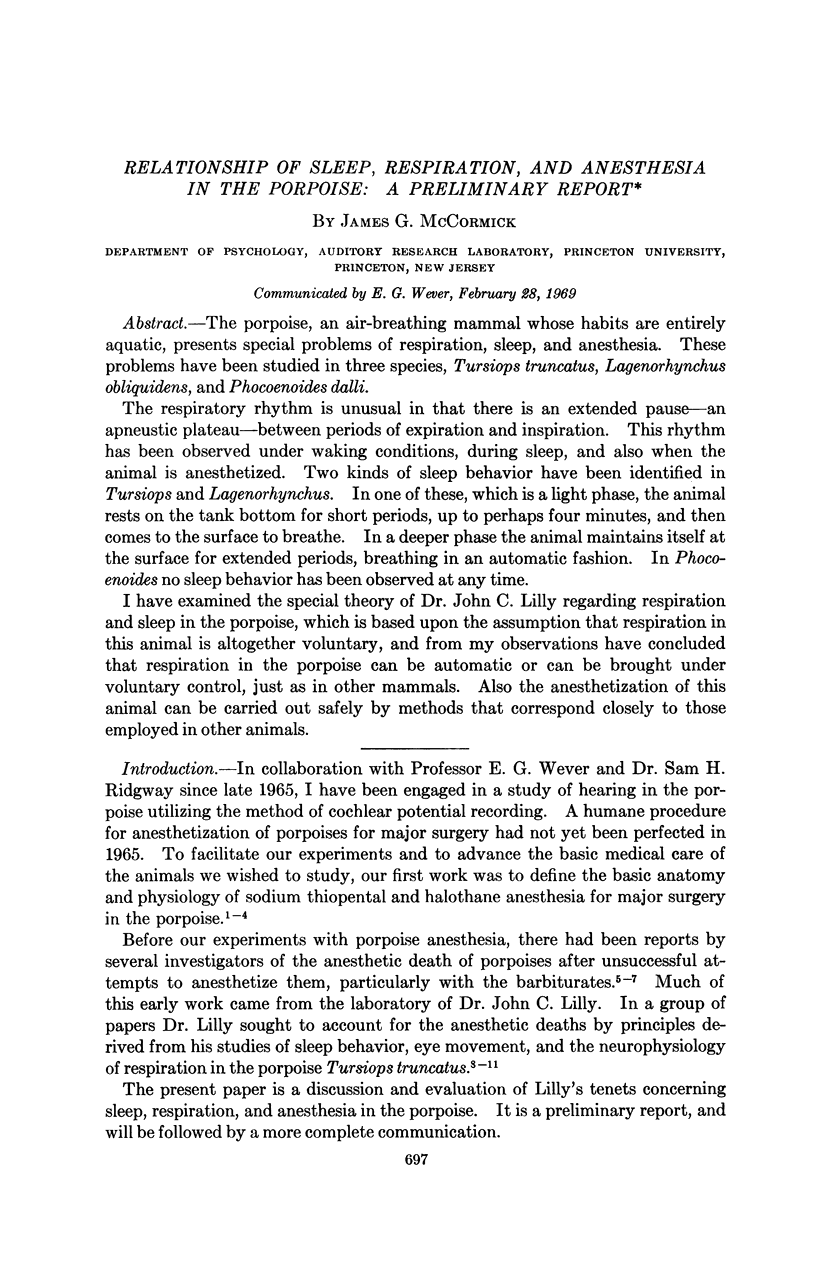
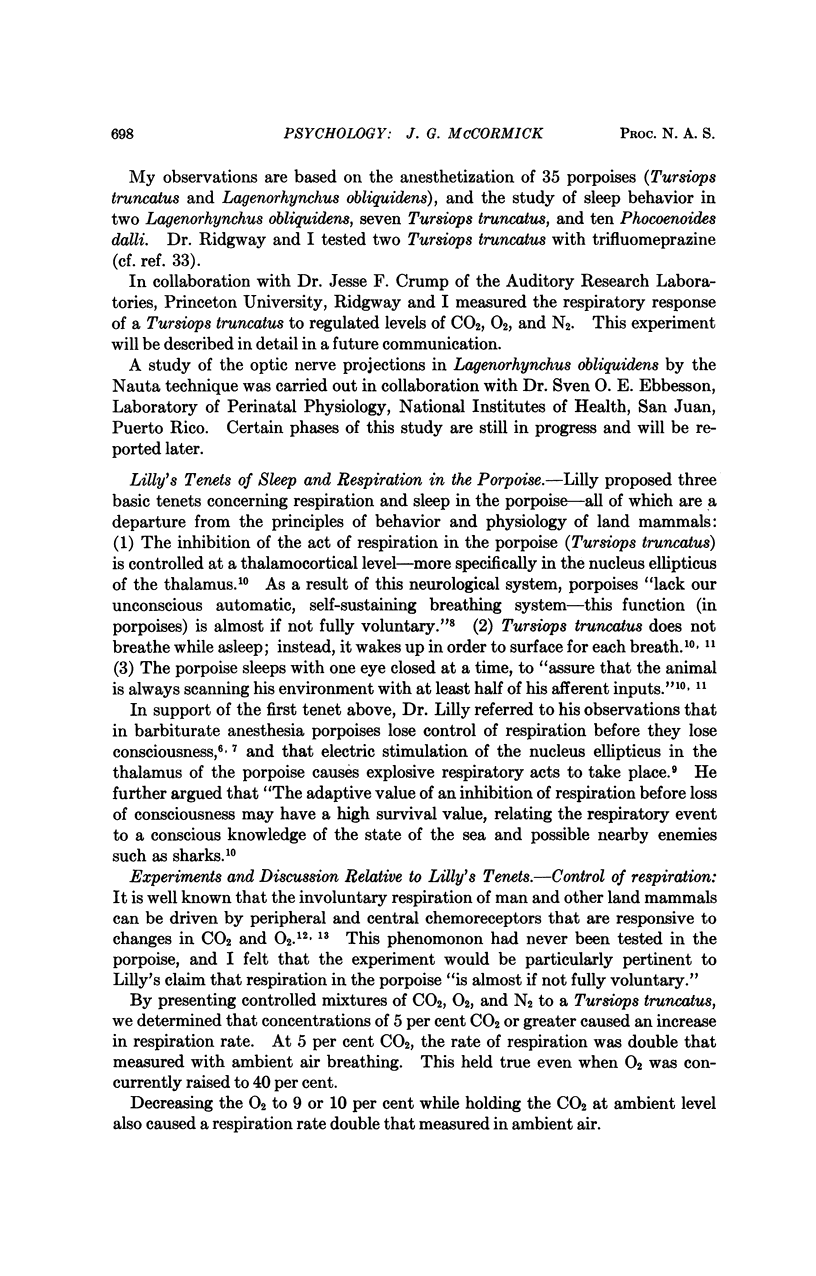
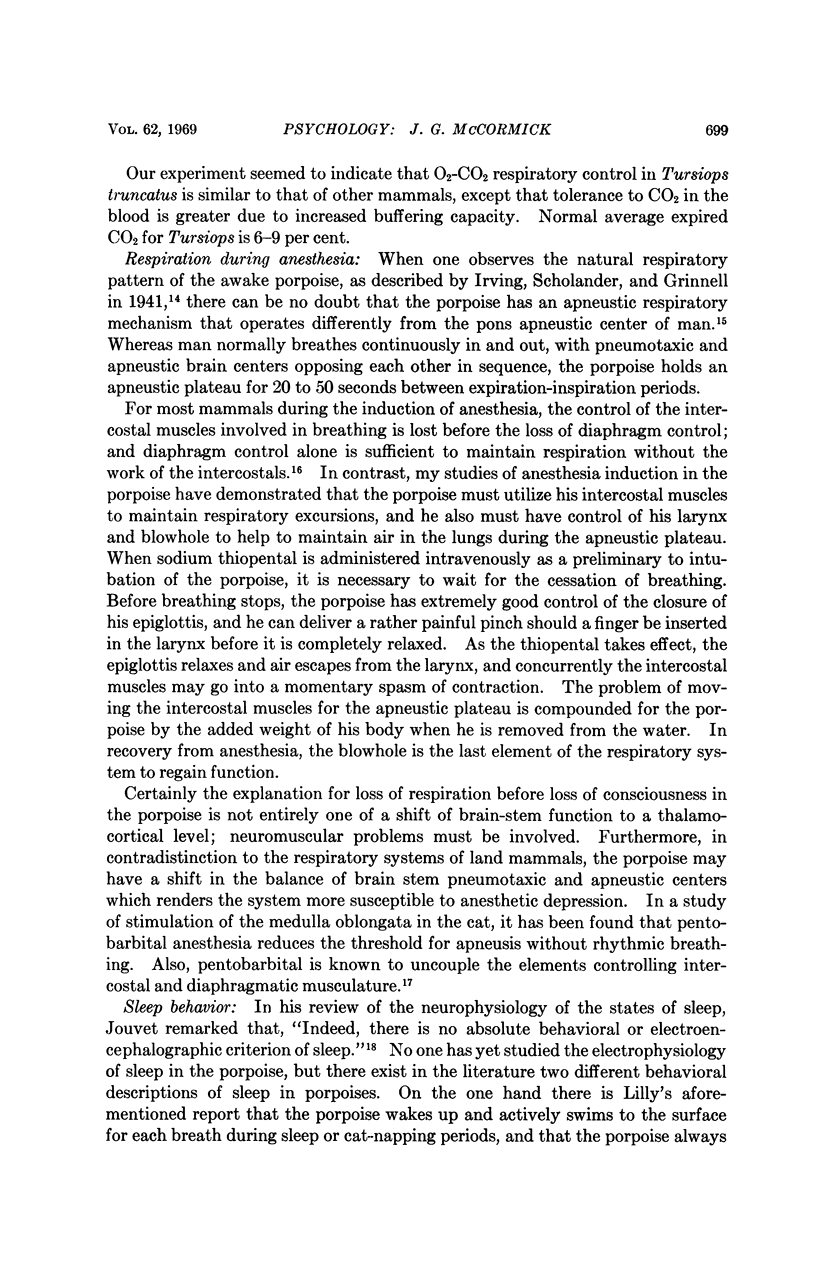
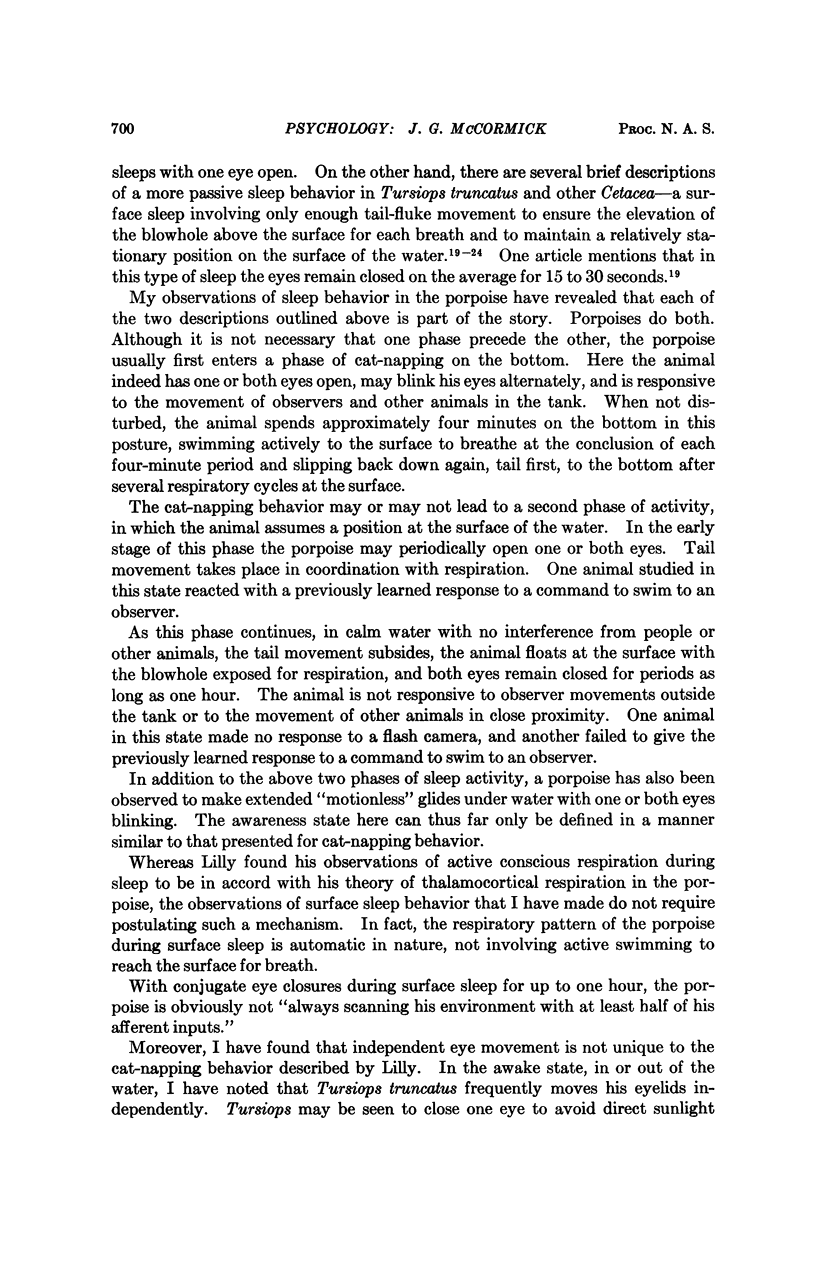
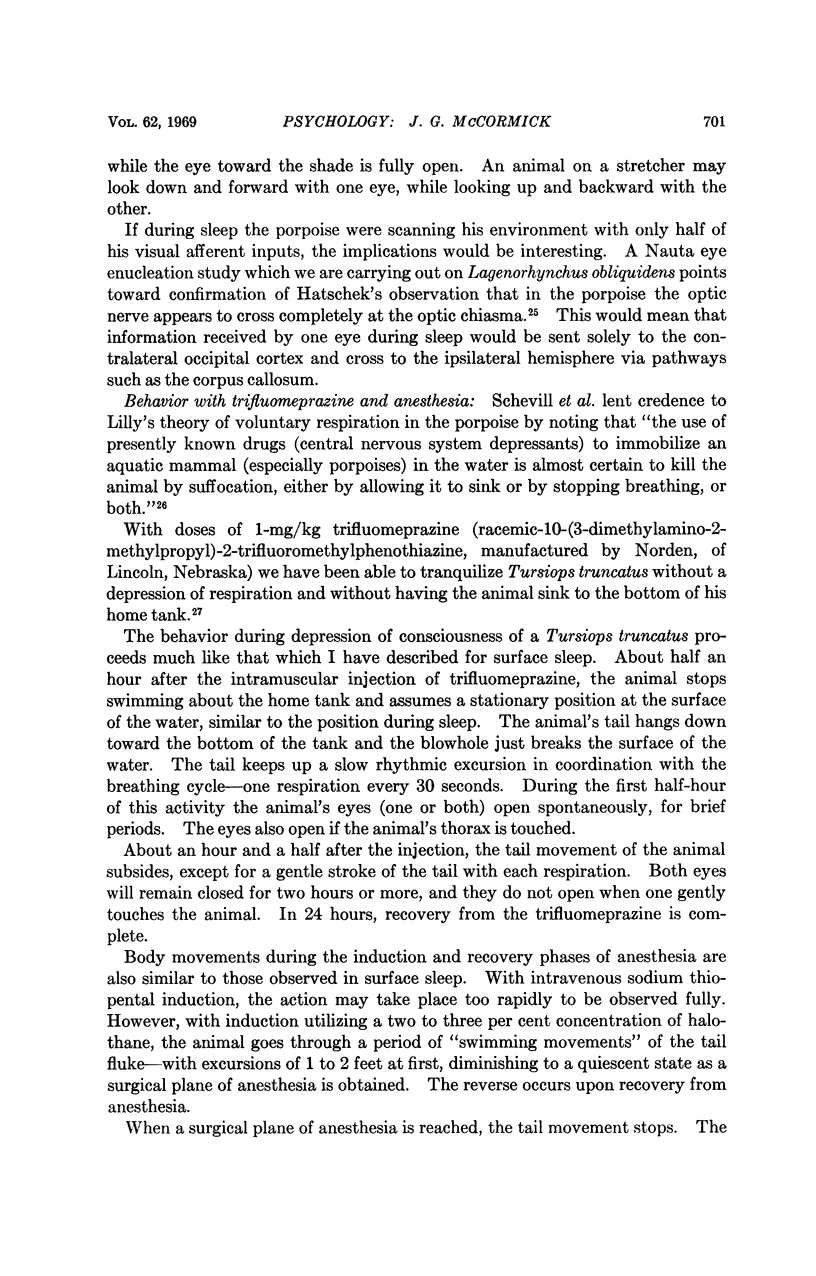
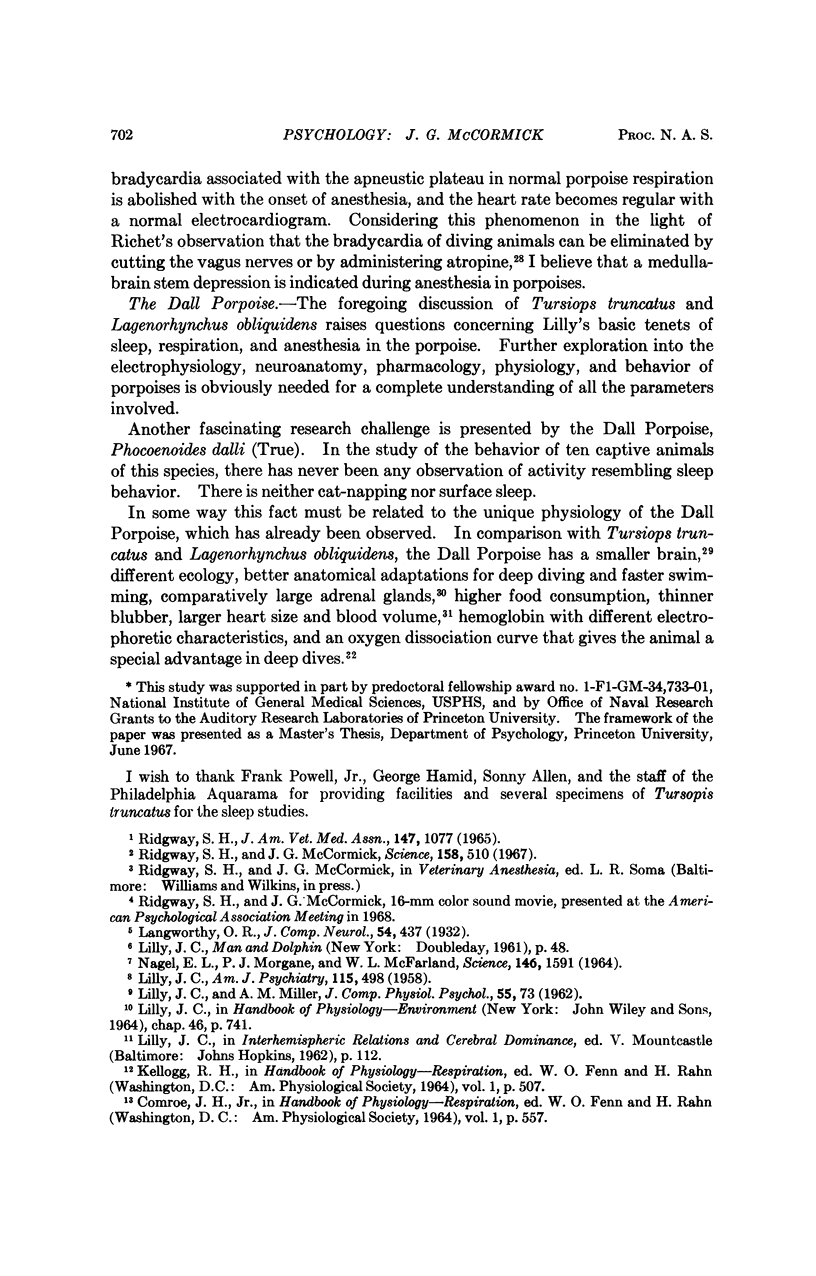
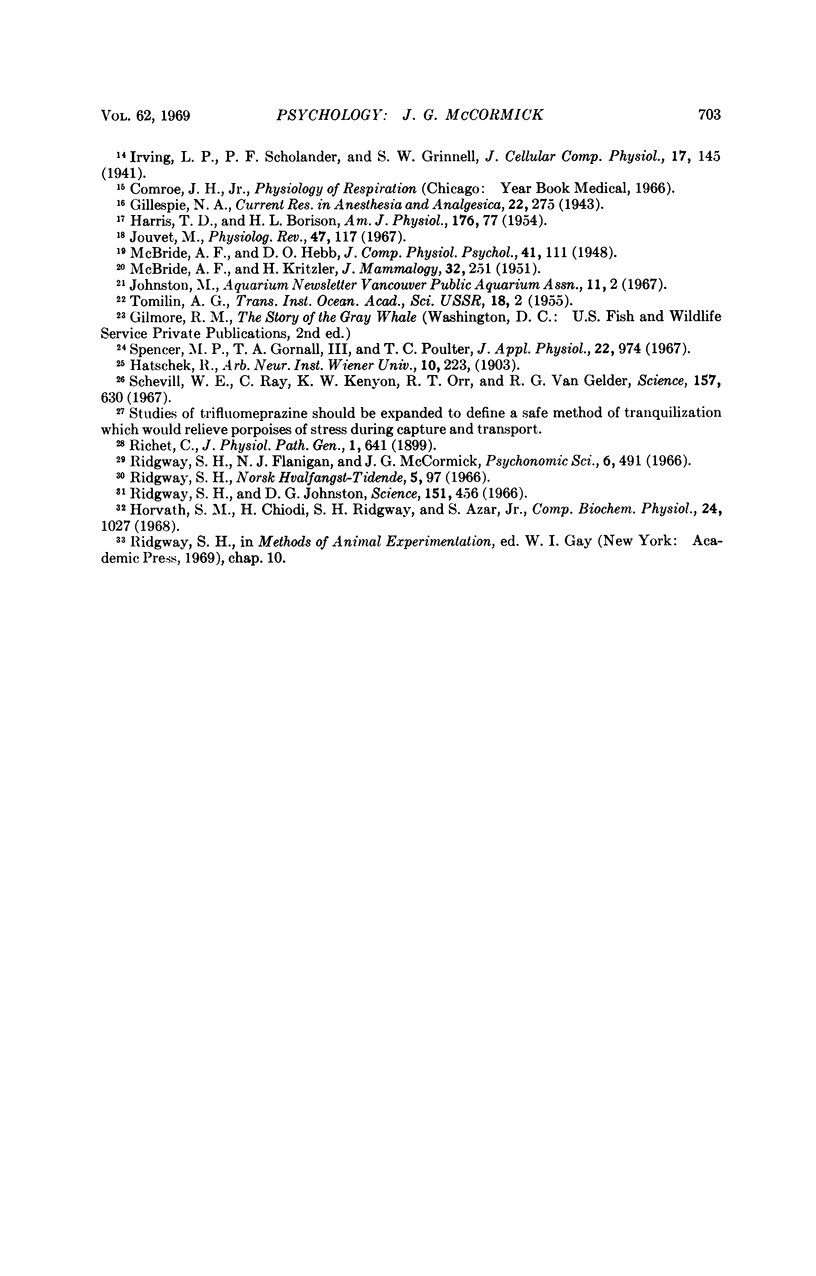
Selected References
These references are in PubMed. This may not be the complete list of references from this article.
- HARRIS T. D., BORISON H. L. Effect of pentobarbital on electrical excitability of respiratory center in the cat. Am J Physiol. 1954 Jan;176(1):77–82. doi: 10.1152/ajplegacy.1953.176.1.77. [DOI] [PubMed] [Google Scholar]
- Horvath S. M., Chiodi H., Ridgway S. H., Azar S., Jr Respiratory and electrophoretic characteristics of hemoglobin of porpoises and sea lion. Comp Biochem Physiol. 1968 Mar;24(3):1027–1033. doi: 10.1016/0010-406x(68)90815-3. [DOI] [PubMed] [Google Scholar]
- Jouvet M. Neurophysiology of the states of sleep. Physiol Rev. 1967 Apr;47(2):117–177. doi: 10.1152/physrev.1967.47.2.117. [DOI] [PubMed] [Google Scholar]
- LILLY J. C. Some considerations regarding basic mechanisms of positive and negative types of motivations. Am J Psychiatry. 1958 Dec;115(6):498–504. doi: 10.1176/ajp.115.6.498. [DOI] [PubMed] [Google Scholar]
- NAGEL E. L., MORGANE P. J., MCFARLAND W. L. ANESTHESIA FOR THE BOTTLENOSE DOLPHIN, TURSIOPS TRUNCATUS. Science. 1964 Dec 18;146(3651):1591–1593. doi: 10.1126/science.146.3651.1591. [DOI] [PubMed] [Google Scholar]
- Ridgway S. H., Johnston D. G. Blood oxygen and ecology of porpoises of three genera. Science. 1966 Jan 28;151(3709):456–458. doi: 10.1126/science.151.3709.456. [DOI] [PubMed] [Google Scholar]
- Ridgway S. H., McCormick J. G. Anesthetization of porpoises for major surgery. Science. 1967 Oct 27;158(3800):510–512. doi: 10.1126/science.158.3800.510. [DOI] [PubMed] [Google Scholar]
- Ridgway S. H. Medical care of marine mammals. J Am Vet Med Assoc. 1965 Nov 15;147(10):1077–1085. [PubMed] [Google Scholar]
- Schevill W. E., Ray C., Kenyon K. W., Orr R. T., Van Gelder R. G. Immobilizing drugs lethal to swimming mammals. Science. 1967 Aug 11;157(3789):630–631. doi: 10.1126/science.157.3789.630. [DOI] [PubMed] [Google Scholar]
- Spencer M. P., Gornall T. A., 3rd, Poulter T. C. Respiratory and cardiac activity of killer whales. J Appl Physiol. 1967 May;22(5):974–981. doi: 10.1152/jappl.1967.22.5.974. [DOI] [PubMed] [Google Scholar]


